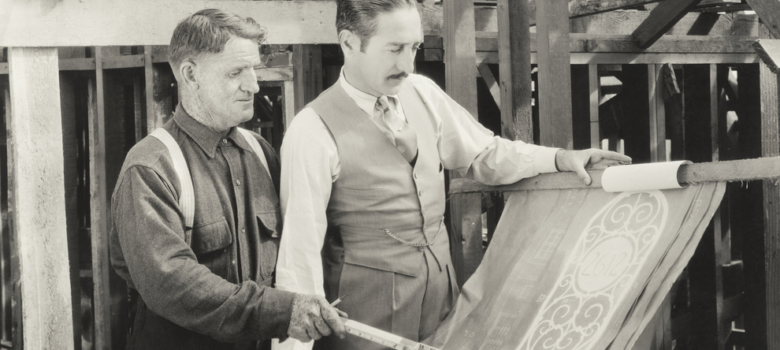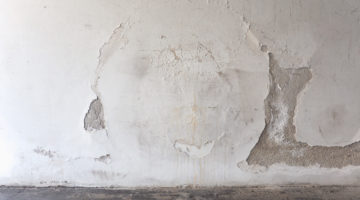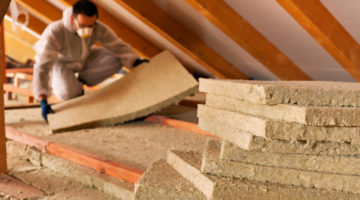
Cavity Wall Insulation: How We Got to Where We Are
Let us take you back in time to an unimaginably different world. It’s the late 18th century, we’re at war in America, plague fills the streets, you can still sees the stars from the centre of London. What’s the first you notice though? What’s the first thing that smacks you in the face? These poor historic masses don’t even have cavity walls.
Okay, so the type of walls may not actually be the first thing that you notice, but back when solid walls were the only form of protection against the elements, the inherent problems affected everyone. Solid walls let through twice as much heat as cavity walls, and that’s even before you add insulation. Any water absorbed comes directly through to your nice new living room. Many people living in older style houses built with this method attempt to seal the surfaces of damp masonry walls, but all this does is trap moisture behind the coating and cause a damp problem elsewhere. Without going in to too much science, that’s because solid walls need to breathe. What’s a peasant to do?!
Get back in the proverbial time machine, we need to go forward a little bit. This time we’re stepping out into the Victorian Era. Politics are in unrest, Abraham Lincoln is in the White House, and scientists are raving about bold new inventions. Which that’s all well and good, there were also hugely interesting things happening on the building sites. It was the early Victorian period when builders and architects first began experimenting with the concept of two walls separated by a hollow space. Ostensibly this was designed to combat the elements and halt damp, appearing first in coastal towns and exposed areas, but by the 20th century there were becoming widespread.
Say goodbye to the nice Victorians, it’s time to visit the decade of computer games, burning bras, and really bad interior design. Yep, you guessed it, we’ve landed in the 70’s. We’re not staying long, just popping our heads out of the door to note that there’s an energy crisis looming and people are filling their cavity walls! During the 1970s there was a worldwide energy crisis where many industrial countries struggled for supplies of oil and gas, so there was a sudden spike in energy prices. One of the results of this was a massive push towards energy efficiency and this meant insulation insulation insulation.
The concept of insulating a cavity wall is really very simple – it involves filling the cavity between the two skins of masonry bricks with an insulating material, which slows the movement of heat through the wall. Maintaining the heat inside your home keeps you warm and cosy when you need to be. It also works in reverse by keeping your house cooler in the summer months. Such insulation is invisible, cheap and quick to install, with no reduction to room sizes. Installing cavity wall insulation helps not only to reduce your heating bills by saving energy lost through the walls, it also minimises your carbon footprint by limiting the amount of CO² and other greenhouse gases emitted from your property.
With so many benefits and rising international energy costs, it should come as no surprise that by the 90’s the government was backing various grants and funding schemes to get more houses with cavity walls using retrofitted insulation. The incentives were great. So, in fact, that cavity wall insulation became something of a goldrush, with large numbers of inexperienced and untrained contractors installing insulation on properties across the country. Though at first reported problems were minimal, we are now left with a legacy of incorrectly installed insulation in thousands of houses across the country.
While I’d love to let you stay in the 90’s to invest in Apple stocks and warn people about cavity wall insulation, back here in 2018 we’re looking at the result of these years of improper installation.
Cavity Wall Insulation: Where We Are Now and What To Do About It
Incorrectly installed cavity wall insulation causes water to seep into a property’s walls, causing structural problems and damp patches that may also manifest into mould. In some cases, the damp and mould resulting from CWI can cause health problems or exacerbate existing conditions, particularly respiratory conditions. Materials such as formaldehyde, which shrinks as it cures, leaving air gaps in the walls which encourage cold bridging, may decompose over time creating chemical fumes.
Most cavity wall insulation is perfectly safe – but it depends on the material used, and the quality of the workmanship. Modern retrofit cavity wall insulation methods pose no threat to those living in the home, but if your walls were insulated decades ago, you may want to check what was used. Similarly, if your cavity walls were wrongly insulated, this could cause you problems down the line.
If you’re installing cavity wall insulation, it’s worth opting for a modern insulating material with proven performance! EPS (expanded polystyrene beads) and polyurethane foam are the most commonly used these days, and with good reason. Neither have health implications, and they are waterproof, so should be as effective in decades time as they are now. Always ask for an explanation of the insulation material your installer is using if there’s anything you’re not sure about.











I had my house insulated with cavity wall insulation with eps beads shortly after I bought it 6 years ago and I have been very happy. I paid slightly more for random/oval shaped bead rolled in carbon dust to make them silver, rather than then plain white once. Blown in with some adhesive to prevent sagging and them all falling out if you drilled a hole.
No issues at all. Everything stays put when i have made holes or removed bricks or window surrounds, I had the loft done at the same time so cant compare them independently, but certainly the house cost less to heat, felt warmer for the same setting, and I think it has also helped with drafts and air tightness. The company I used was Domestic General Insulation which had I think four vans doing normal and one doing the grey beads from the local base, more nationally, I understand they have now wound up without the government funding the I had no issues at all.
I chose more than ten years ago to insulate the inside of the walls of my victorian semi using horizontal battens covered with aluminium double bubble wall sheet then horizontal battens then foil backed plasterboard.I took up floor boards and took the double cavity formed down to the ceiling of the room below,taking care over detailing all joins covered with aluminium tape. this has proved very effective and most of the balanced flue gas wall heaters have now gone. I have chosen to replace the gas multpoint water heaters . with new ones. the reason for this the more gas used than a condensing gas central heating system is probably more than offset by the much lower maintenance cost of and longer life of the hot water heaters. My honest gas fitter agrees! Architects Brenda and Robert Vale pioneers in retrofitting old property when they designed a new house in the midlands opted for one balanced flue heater at ground level and optimal insulation,similar idea.
Won’t millions of polystyrene beads in time get into our drains and waterways? flow into the sea? Float about for ever ?
Please tell me I am wrong. I saw my neighbours house receive wall insulation by the application of thermabeads, and I was horrified. These brick houses may perhaps stand for 200 years, but then what ?